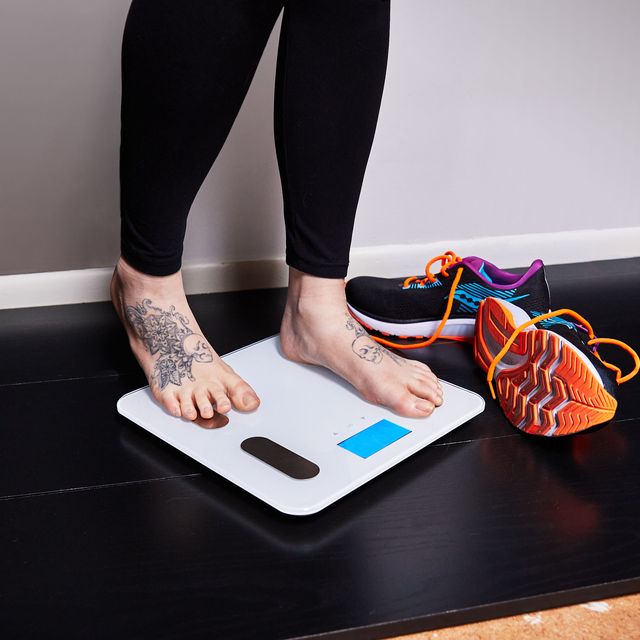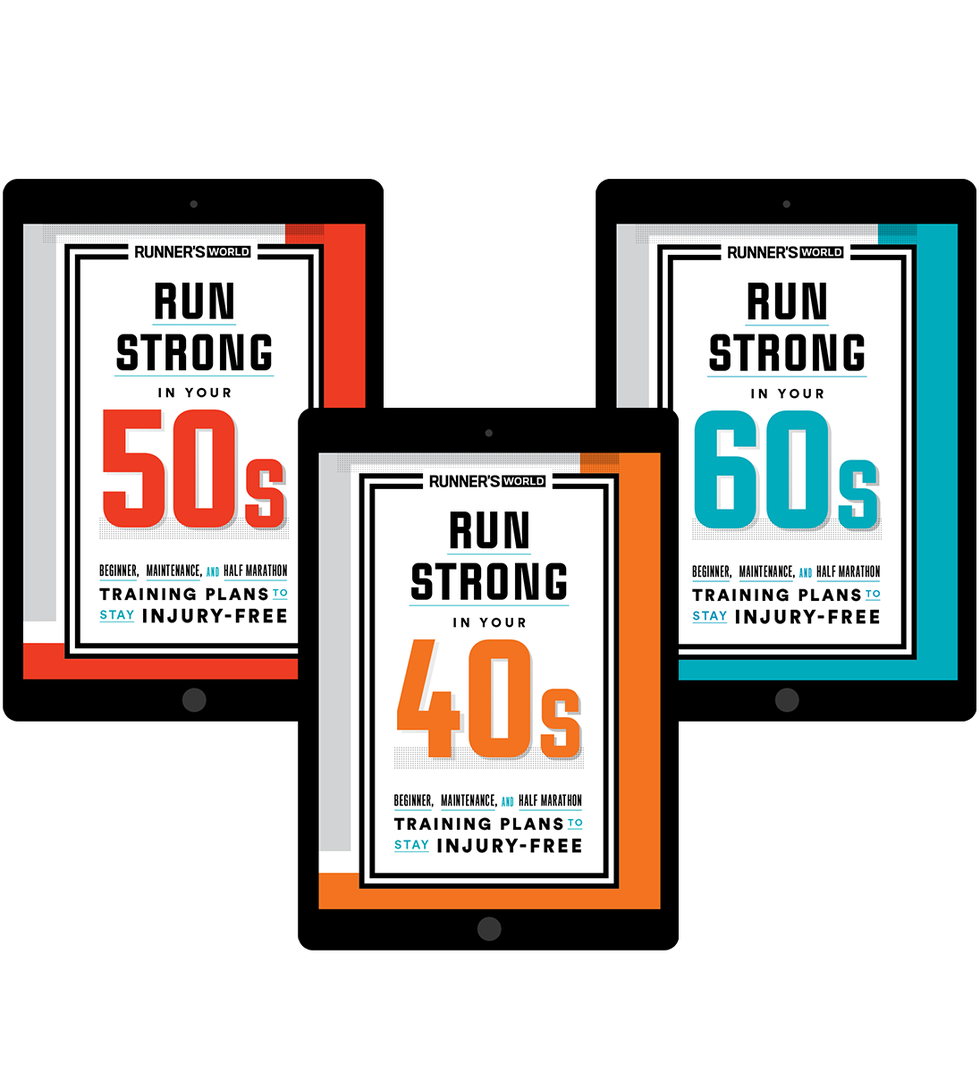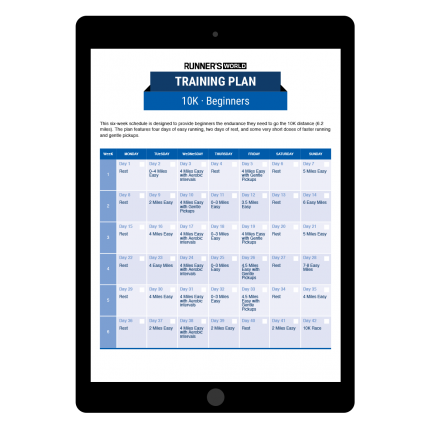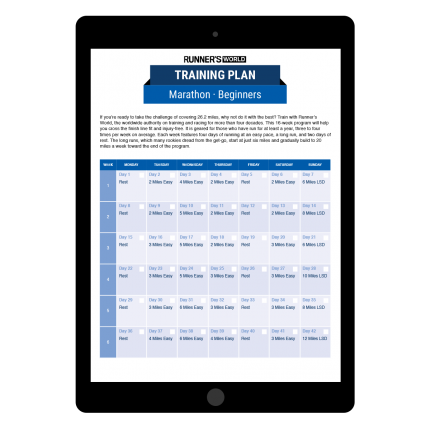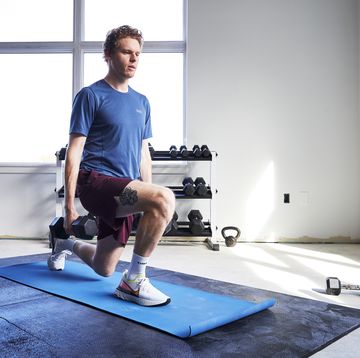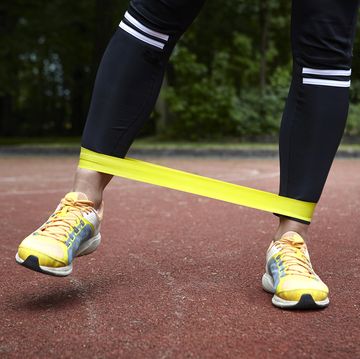It may have been a while since you’ve stepped on a scale.
You’re in good shape; you feel great; and you run, a lot. So who cares what the number on the scale says, right?
We agree—the number on the scale is only one metric and doesn’t provide a complete picture of health and performance. Yet we still hear about “race weight”—that is, the weight at which you supposedly run your fastest. So it makes you wonder: Is there really an ideal running weight to think about?
Perhaps you have always had the same body and never considered what gaining muscle or dropping a few pounds might do for your performance. And while your weight isn’t the be-all to end-all of a good race, it can still play a role, says Alicia Shay, a nutrition counselor in Flagstaff, Arizona.
Which is why striving for an “ideal” number shouldn’t be your main focus—especially if you’re already logging major mileage and have a fairly healthy diet you use to fuel your training. It’s a delicate balance: Dipping below your equilibrium weight or losing weight in unhealthy ways could put you at risk for injury, illness, and disordered eating behaviors.
Join Runner’s World+ today for more of the latest health and nutrition tips!
What the Science Says
As a general rule, runners move most efficiently when they’re at what’s considered a healthy body mass and body-fat percentage. “Running is really just a form of jumping,” says Matt Fitzgerald, certified sports nutritionist and author of Racing Weight: How to Get Lean for Peak Performance. “You can’t move forward without moving up, and the more you have to lift against gravity, the more energy it requires.”
Body weight affects performance in running more than it does in other sports, such as swimming and biking, according to a 2011 Swiss study on Ironman triathletes. And a lower body-mass index seems increasingly important as race distances get longer: A 2014 study found that the optimal BMI for male 800 meter runners was between 20 and 21, while it dropped between 19 and 20 for male 10,000 meter and marathon runners. (While this research is interesting, generalizations about BMI shouldn’t be used prescriptively, Shay says, because it doesn’t take into account lean muscle or body fat. Plus, most professionals now view BMI as an antiquated marker of health.)
Still, there are other reasons lighter suggests faster: Larger people are less efficient at delivering oxygen throughout the body. Losing weight doesn’t change your lung capacity or function, but it does mean that each breath doesn’t have to go as far.
Leaner athletes can dissipate heat better, too, because they have a higher surface-area-to-body-weight ratio and less insulating fat tissue. They also burn carbohydrates more efficiently. So while weight isn’t everything, it’s certainly one thing. “Four factors determine how fast you are,” says Sean Wade, a top masters athlete and coach of the Houston-based Kenyan Way running program. “Genetics, form, how hard and smart you train, and your weight—and not necessarily in that order.”
While the science points to some reasons why lighter bodies can move faster, it’s important to remember that there is no such thing as one “ideal” body type for running and that all runners, even at the elite level, look different and represent different body types.
Age Makes a Difference
Masters runners may have the hardest time losing weight—no matter how much they run. Fred Zalokar, 60, averages more than 100 miles a week and for years oscillated between 170 and 180 pounds. But since he cleaned up his diet nearly a decade ago, he’s dropped more than 20 pounds, increasing his speed and turnover along the way.
“Weight loss has never just happened for me, even when I was regularly running ultras,” Zalokar says. If he’s not consciously watching his diet, he can make up for all that mileage without a second thought, he says.
That’s because adults begin losing muscle mass in their early 40s, which can impair performance and decrease metabolism, says Emily Brown, RD. Getting enough physical activity (including resistance training to maintain muscle mass) is especially important, as is cutting back on processed foods and oversized food portions.
Tom Storey, 55, who has run Boston numerous times, attributes his first qualifying run, in 2007, to weight loss. In just more than a year, he went from 205 to 150 pounds and shaved more than 30 minutes off his previous 4-hour marathon time.
Crunching the Numbers
Finding a healthy weight at which you perform your best takes some time.
Andrew Lemoncello, 2012 Olympian for the U.K. and a coach for McMillan Running, didn’t find his ideal race weight until going pro after college. “I used to live by the saying, ‘If the furnace is hot enough, it will burn anything,’’ he says. “I ate healthy foods, but I also loved desserts and never paid attention to my portions.”
When he began spending time with other pro runners, Lemoncello realized he needed higher-quality fuel for his furnace to run at its most efficient. He began planning his meals and stopped mindless eating, and he dropped from 150 pounds to 145. “I started setting PRs and had more energy and confidence,” he says. “If I’m eating well and training hard, that’s the weight my body naturally gravitates to.”
For any weight loss or gain, it helps to have something to aim for. In terms of your health, your body fat percentage should fall within a certain range. These are the age-adjusted body fat percentile recommendations health pros use from Human Kinetics:
Men:
- Essential Fat: < 5 percent
- Athletes: 5 to 10 percent
- General Fitness: 11 to 14 percent
- Good Health: 15 to 20 percent
- Overweight: 21 t0 24 percent
- Too High: > 24
Women:
- Essential Fat: < 8 percent
- Athletes: 8 to 15 percent
- General Fitness: 16 to 23 percent
- Good Health: 24 to 30 percent
- Overweight: 31 to 36 percent
- Too High: > 37
These ranges can be good motivators, according to Rasa Troup, a certified specialist in sports dietetics (CSSD), a 2008 Olympian and current nutritionist for Team USA Minnesota, but she adds that athletes shouldn’t take them as gospel. “My biggest concern is that they distract runners from listening to and understanding their own bodies, because they’re caught up in reaching some number,” she says. “It’s more important to be aware of how tired, hungry, or sluggish you are feeling.”
It’s especially important to be weary of online calculators or tools designed to help you find your “ideal” or fastest running weight—especially for women who have evolved to hang on to more body fat for reproduction purposes. Kimberly Mueller, C.S.S.D., owner of San Diego-based Fuel Factor Nutrition Coaching and a 2:52 marathoner, warns that calculators can skew too low with body-fat goals. “Some have estimated my ideal body composition to fall around 12 percent,” she says, “but I know I lose my menstrual cycle if I fall below 14 percent.”
It’s extremely important to pay attention to reactions to weight change such as a loss of your menstrual cycle, increased stress, an inability to sleep, consistent injuries, or constant fatigue. This is your body signaling that something is off, and that your weight or body fat percentage could be to blame.
So How Much Is Too Much?
If you do have excess, unhealthy weight you want to lose by running, there’s nothing wrong with that, so long as you approach it with a healthy mindset and in a healthy manner. Troup advises only doing it in a way that supplements your training, rather than sabotaging it.
“Well-fueled athletes will perform well, and well-fueled means something different for every person,” she says. Of course, losing weight isn’t a good idea for all competitive runners. For those who are already naturally very lean or who work hard to stay at the low end of their healthy weight, the threat of falling below that point at which you race your best is real.
After Brian Rosetti graduated from college, he spent two years training almost full-time. His mileage was increasing, but he was focused on a low weight instead of nutrition for performance. Just as he made a breakthrough in his training, and as his weight dropped to an all-time low of 146 on his 6-foot-1 frame, he suffered a sacral stress fracture. “My bone density was below the median level, and I don’t think I was getting the right nutrients,” Rosetti says. “I was focused on keeping as light as I could. That’s a scary place to be.” The injury, in effect, ended his career.
Fitzgerald says impaired performance is usually the first sign that a runner has dipped into dangerous territory. “It’s the canary in the coal mine—your body’s signal that it’s under too much stress.”
For women, a missing menstrual period is an indication of an unhealthy and unsustainable weight, with potential complications such as infertility and osteoporosis. And while it’s less talked about, competitive men can struggle, too. A 2014 Southern Utah University study found that almost 20 percent of male high school cross-country runners were at risk for disordered eating behaviors like bingeing and purging. Some boys expressed a desire to gain body weight to be more attractive, while others wanted to lose it to improve their running.
To keep your weight loss from becoming detrimental, the American Council on Exercise recommends maintaining a BMI that stays at or above the normal weight threshold of 18.5 and a body fat percentage above 14 percent for women and 6 percent for men. Some elites dip below these guidelines, Troup says, but it’s not recommended.
Fitzgerald also recommends tracking your performance. “If you’re getting skinnier, but your times are getting worse, you’ve passed the point of beneficial weight loss,” he says.
And above all else, Shay says, listen to your body and your mind. “If you’re starving all the time, or you’re irritable and cranky, or you’re bonking on runs, you’re probably being too ambitious and getting too light.”
Timing Is Everything
The time to prioritize weight loss is in a four- to nine-week period before you start ramping up your workouts, while you’re building your base. “You can’t maximize fitness gains and weight loss simultaneously,” Fitzgerald says.
Mueller agrees. During a competitive season, athletes shouldn’t restrict themselves. If you do reduce calorie intake, a reduction of 200 to 300 calories a day is best for those who want to lose a few pounds, but stop restricting calories the week of a big race, she adds, because your body will perform best on a full tank.
Lemoncello follows a similar schedule during his training period, gaining 5 to 10 pounds when he’s not racing. “It’s good for my running,” he says. “The break helps me feel energized, and I come back motivated.”
The bottom line: Is there an “ideal” running weight? No. Everyone’s ideal weight for running is different, so it’s important to know your body, listen closely to the signals it’s sending you, and do what’s best for your health regardless of the number on the scale.
